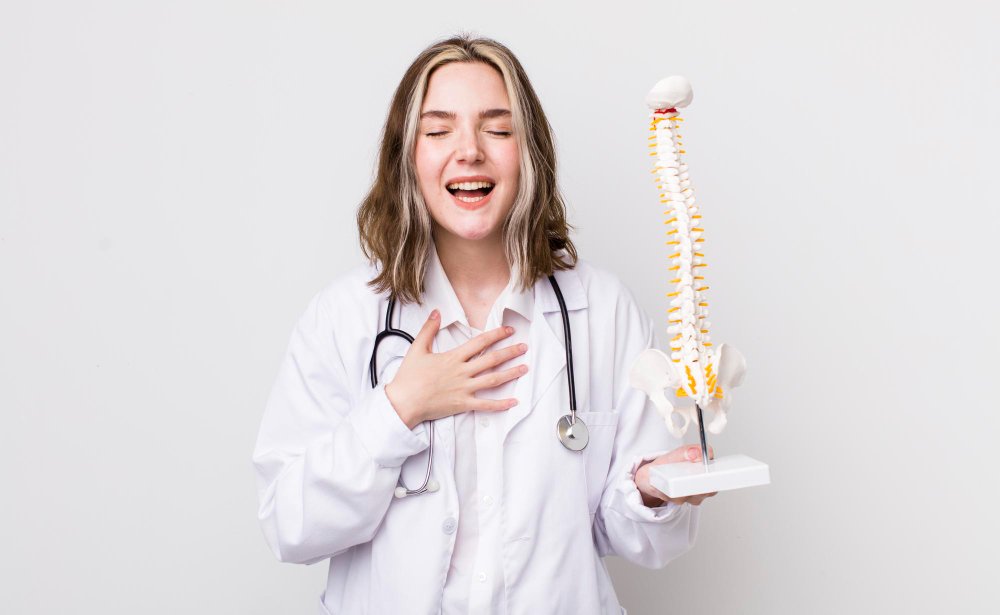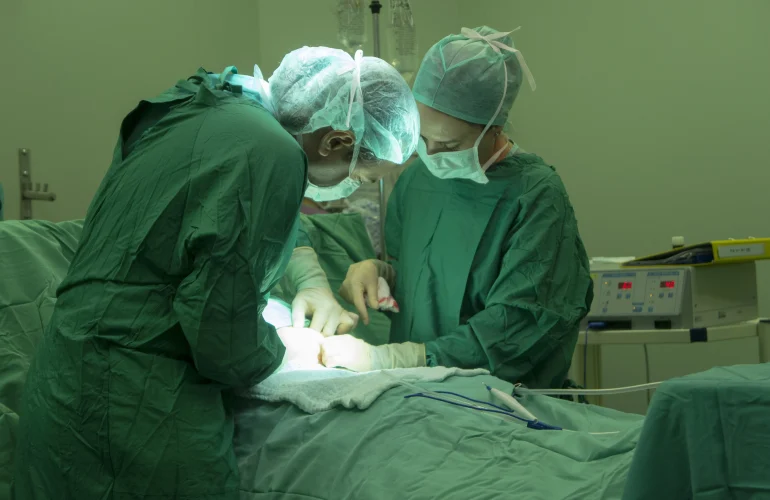Scoliosis ? Don’t Live With An Emotional Slide Scoliosis Is Nothing To Be Worried About
Scoliosis is a common spine condition often found in adolescents. Roughly 3 million new cases of the condition are diagnosed in the United States each year and more than 10 million cases per year in India.
Dr Hrushikesh Vaidya, Medical Director and Chairman Horizon Group of Hospitals said “Yes, scoliosis can be scary. But when you are informed and you are willing to put in the work to treat the condition, you can live a normal, healthy active life. Mild scoliosis is not problematic, but as children grow, some spine deformities continue to get more severe. Severe scoliosis can reduce the amount of space in the chest, making it difficult to breathe properly. The degree of curvature in scoliosis that ranges from 10-20 degrees is considered mild scoliosis, 20-50 degrees as moderate scoliosis and greater than 50 degrees as severe scoliosis.”.
Scoliosis (derived from the Greek work scolios – meaning crooked) is a condition wherein there is an abnormal sideward curvature of the spine. Scoliosis is the medical term for a sideways curvature of the spine.
Dr Vishwanathan Iyer, Leading Brain and Spine Surgeon and Consultant, Horizon Prime Hospital “Scoliosis occurs most often during the growth spurt just before puberty. It is usually first noticed by a change in the appearance of the back. there are many complications that occur like The Head being slightly off-center, Uneven shoulders, Asymmetry of the chest, One hip higher than the other, Shoulder blade higher than the other, Prominent ribs, Asymmetry of the back and visible curve. While most people with mild scoliosis will not require surgery, in some cases it may be recommended. Some children develop spine deformities that get more severe as they grow. Severe scoliosis can be painful and disabling. Without proper treatment, scoliosis may worsen and pose serious health complications including damage to heart or lungs, reduced mobility or chronic pain. Further, the deformity itself may be cosmetically unappealing. Surgery, thus, becomes necessary at times. Being a significant procedure, scoliosis surgery can be life-changing for individuals with severe curvatures that impact their health and quality of life”.
Dr Ria Vaidya, CEO, Horizon Group of Hospitals said “It breaks my heart to know that patients and parents experience such fear and anxiety surrounding scoliosis, especially when I know most of those fears are based on information that is untrue or outdated. Scoliosis is actually nothing to be afraid of. Whenever an individual receives a medical diagnosis, it’s common for fears to arise. They worry about their ability to participate in activities they love. Scoliosis fears are quite prevalent among those who have recently received their diagnosis, largely because the condition is so misunderstood. For parents, the worries are amplified because they fear the potential limitations on the lives and futures of their children. They want to ensure limitless possibilities for their young ones, but the threat of scoliosis limits those possibilities, or so they think. And because the condition is so misunderstood, misinformation dominates people’s attempts to learn more, which only leads to greater fear and anxiety”.
Dr Jayesh Bhanushali, Leading Orthopaedic Spine Surgeon and Consultant, Horizon Prime Hospital said “In 80% of cases, the cause of scoliosis is unknown. Such cases are called idiopathic scoliosis. 10% of adolescents have some degree of scoliosis. Scoliosis most often occurs between ages of 10-15 years. The ratio of girls to boys for scoliosis is 7:1. All students should be screened every year by parents and teachers for signs of scoliosis. Monitoring is the best way to know the minor curves in growing kids and can be treated clinically and radiologically for progression”.
Dr Jayesh Bhanushali further also lists down some common scoliosis fears that includes
- The possibility of severe deformity
- An inability to become pregnant or carry a pregnancy term
- Life becoming characterized by increasing amounts of discomfort and pain
- Reduction in the amount and types of physical activity that can be performed
- Treatment that necessitates wearing a cumbersome, uncomfortable brace most of the time
- Making the condition worse by engaging in practices like carrying heavy objects or
- participating in sports
- Collapse of the spine due to continuous progression
Symptoms
Symptoms vary depending on the degree of scoliosis. Common symptoms associated with scoliosis include:
- one shoulder blade that’s higher than the other
- one shoulder blade that sticks out more than the other
- uneven hips
- a rotating spine
- problems breathing because of reduced area in the chest for lungs to expand
- back pain
Causes
The cause of scoliosis often can’t be determined. People with a family history of scoliosis are more likely to develop the condition. Common causes that doctors may identify include:
Cerebral Palsy : A group of nervous system disorders that affect movement, learning, hearing, seeing, and thinking
Muscular Dystrophy : A group of genetic disorders that result in muscle weakness birth defects that affect an infant’s spinal bones
Diagnosis
- Physical Exam
- Imaging
- X-ray
- MRI scan
- CT scan
- Bone scan
Treatment Options
Treatment depends on numerous factors — the degree of spine curvature being a major one. Your doctor will also take into consideration:
- your age
- whether you’re likely to continue growing
- the amount and type of curvature
- the type of the scoliosis
The primary treatment options are bracing and surgery.
Bracing : A person with scoliosis may need to use a brace if they’re still growing and the curvature is more than 25 to 40 degrees. Braces won’t straighten the spine, but they can prevent the curvature from increasing. This method of treatment is more effective for cases that are detected early.
Surgery : Surgery for scoliosis is recommended for people with curves usually greater than 40-50 degrees and/or for whom there is a high risk of continued progression even after spine has finished growing. These larger curves may cause pain, limit certain body functions and cause difficulty or discomfort in breathing. Since scoliosis is a progressive condition, surgery is the only definitive solution to correct it and prevent it from getting worse. A scoliosis surgery may have one of these three goals:
- Stop the further progression of curve
- Reduce or correct the spinal deformity
- Maintaining the trunk balance
How Scoliosis Surgery Is Performed
Surgical Approach: Surgeons access the spine through an incision in the back.
Correcting the Curve: Using specialized techniques and metal implants such as screws and rods, they carefully re-orient the involved vertebrae to achieve a straighter alignment. While the curve need not necessarily be corrected completely, it may be reduced to 25 degrees or less depending on the individual flexibility of the spine.
Fusing the vertebrae: Bone grafts are then used along with the rods and screws to permanently fuse the vertebrae together in the corrected position. This prevents the curvature from worsening.
Risks
- Infection
- Bleeding
- Nerve Injury
- Blood Clots
- Anaesthesia Related Complications
- Adverse Reactions To Medications
Nowadays there have been tremendous advancements in both technologies and techniques to make spine surgery safer. Modern surgical techniques, advanced imaging technology, and the expertise of the surgical team greatly minimize the risk of nerve damage or paralysis. Using specialized intra-operative nerve monitoring methods, surgeons take utmost care to protect the spinal cord and nerves during the procedure, ensuring the safety and well-being of the patient.
Conclusion
The long-term outlook for scoliosis depends on how severe the curvature is. For mild to moderate cases, the condition won’t interfere with everyday activities and functions. Individuals with severe forms of scoliosis may have physical limitations. Living with scoliosis sometimes may impede your daily functions. Surgery maybe the next step if using a brace or trying physical therapy hasn’t improved the condition. While life may not immediately return to normal after surgery, recovery is generally not so bad as one may think – but it requires time, patience and self-care.
Horizon Prime Hospital Neuro and Spine surgery department is equipped to guide you through every step of the scoliosis surgery journey. Our team of highly skilled and experienced surgeons utilizes advanced surgical techniques to minimize invasiveness and promote faster recovery.




